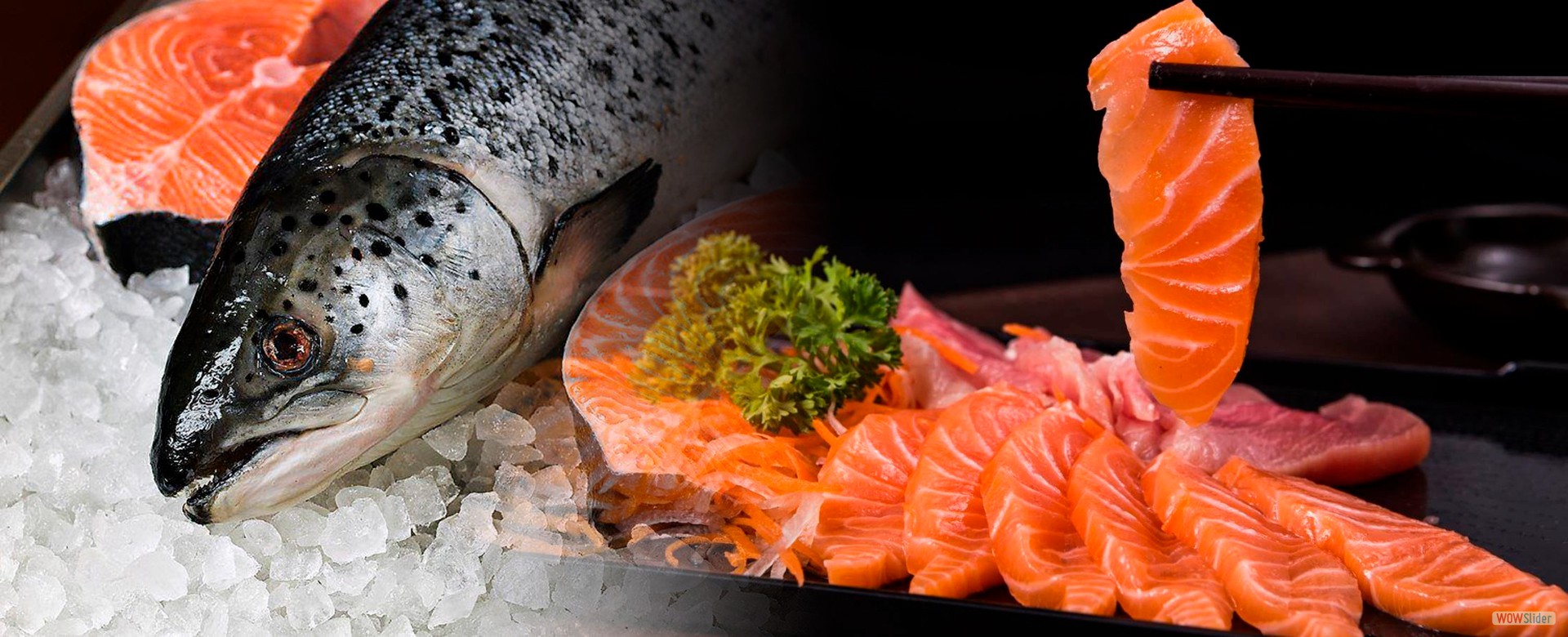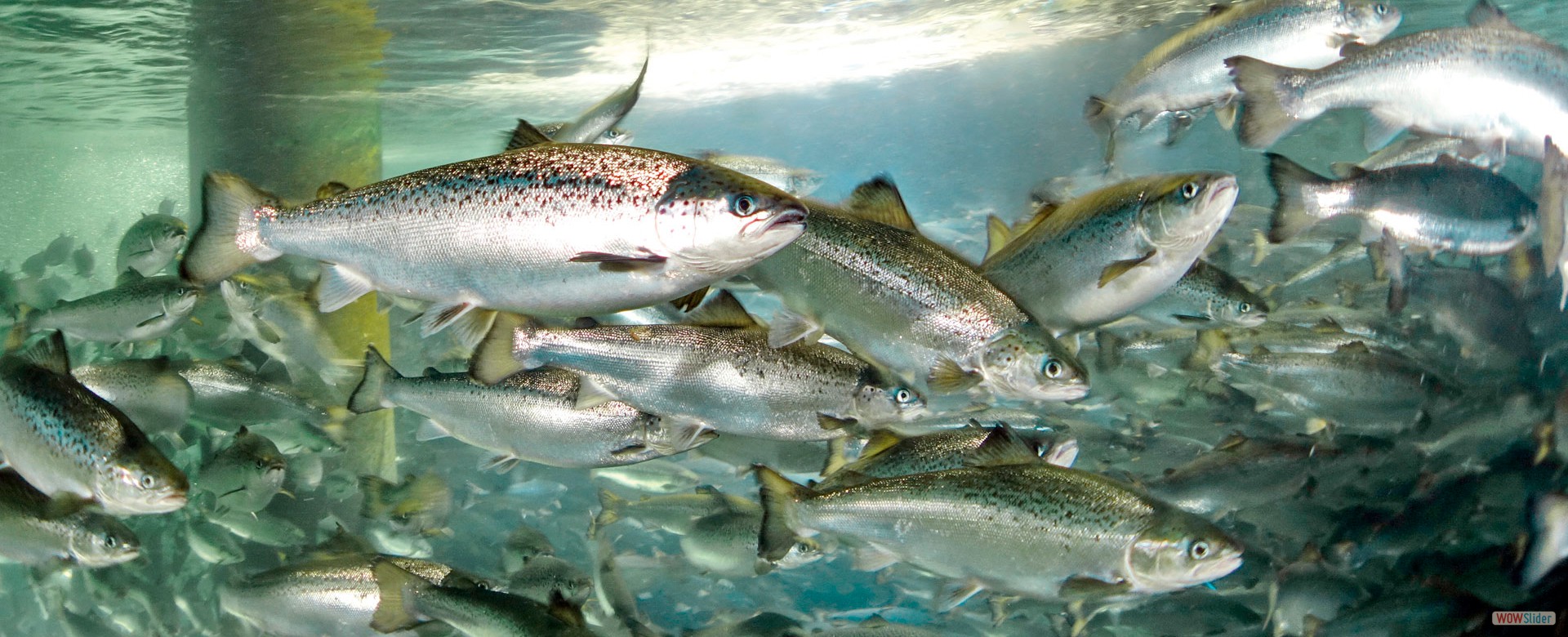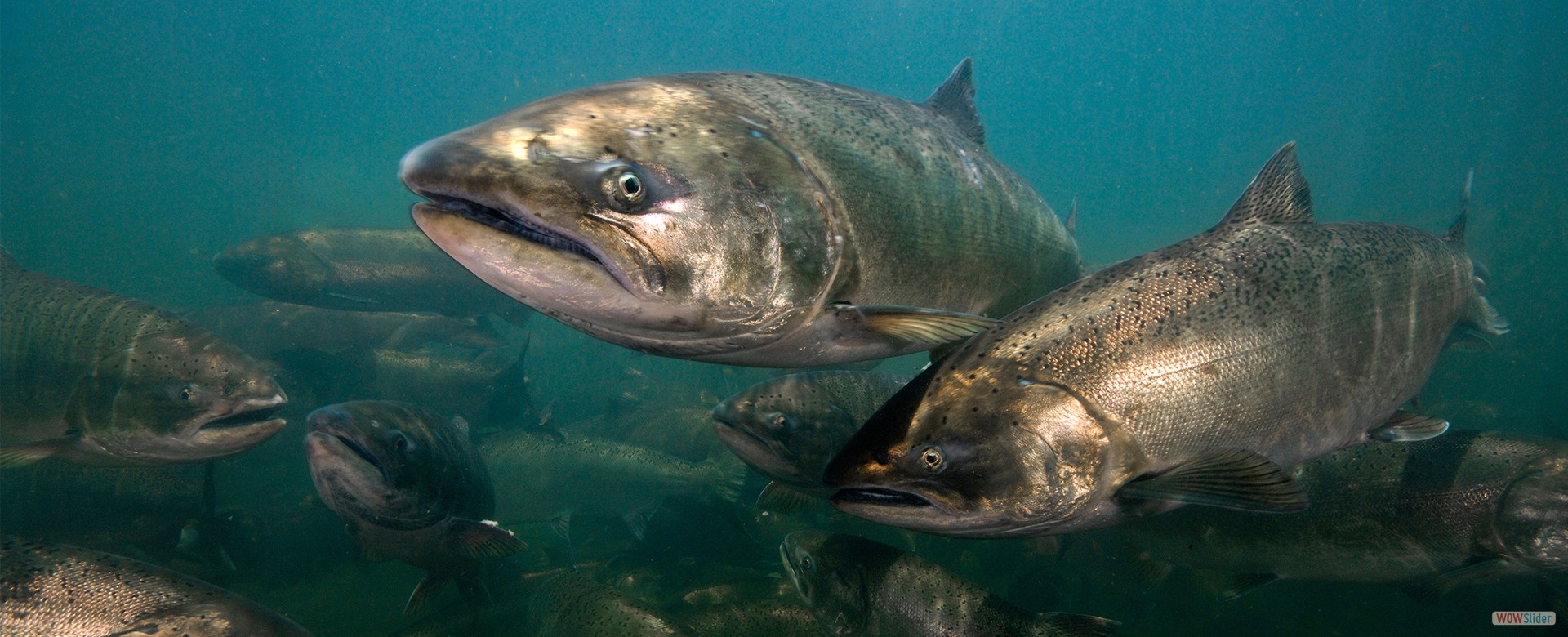Copyright © 2022 Global Sky Business. All Rights Reserved.

Chilean

Salmon
World Production of Salmon
Main Breeding and Marketing Species
It is the most popular species, desired and marketed worldwide. It has a milder flavor than the other species. It is a large salmon with an elongated body, with an exclusive silver color, with black dots on its body. Versatile and fresh for all types of cuts and preparations. Its colorful color is very typical of this species.
Chile is one of the world's largest producers of this species, which is harvested between the months of September and February. It has been the traditional product for the Japanese market in its frozen presentation. In recent years, Trim C Filet has been produced, which has diversified to other markets. It is characterized by its red color. Its main destinations are Japan, the People's Republic of China, Thailand and South Korea.
Chile es el principal productor mundial de truchas de cultivo en agua de mar. Se caracteriza por el intenso color rojo en su carne y una espectacular textura y sabor. Es muy apetecida por el mercado de sushi. Los principales mercados donde llega son Japón, Tailandia, Estados Unidos, Rusia y China.
Previous
Next
Chile is the second largest Producer of Salmon in the World and ranks second in World Exports.
Global supply of Atlantic salmon maintained strong y-o-y volume growth in 2021
The global harvest of farmed Atlantic salmon increased by an estimated 168,000 tonnes (+6.2%) y-o-y during calendar year (CY) 2021 to 2.88 million tonnes. The growth was driven by robust Norwegian supply, where technological innovation, alongside plentiful feed availability from Jul-Oct ‘21, facilitated larger individual fish. Unseasonably warm seawater temperatures during the second-half of the CY 2022 (H2 2022) also contributed to atypically fast smolt growth. These factors resulted in estimated Norwegian salmon supply increasing by approximately 151,848 tonnes (+11.1%) y-o-y in 2021 to 1.52 million tonnes
Mintec anticipates that Norwegian supply may tighten during the first-half of CY 2022 (H1 2022) versus H1 2021. This is based on a comparatively smaller biomass of 332,400 tonnes present on 1st Jan ‘22, compared to 370,300 tonnes for 1st Jan ‘21.
Worldwide Salmon Production (Millions tons)
Total Production in 2021: 3,259 millions tons


The lower biomass accounts for 10,300 fewer live fish y-o-y on 1st Jan ‘21, despite slightly higher weight per fish (4.1kg in Jan ’22 vs 4.0kg in Jan ’21)
The strong y-o-y growth recorded in Norwegian salmon production during the 2021 CY helped offset lower Chilean supply, which contracted by 72,000 tonnes (-9.3%) during the same period to 706,000 tonnes. This decline came as a reaction to weak demand and profitability in 2020, which prompted Chilean farmers to reduce restocking activities. High fish mortality rates associated with sea lice infestations and algae blooms further stunted Chilean farm yields in 2021. However, Chilean production is expected to accelerate during H1 2022, largely in response to the higher average prices and profitability gains recorded in CY 2021. The likelihood of firm demand from the Americas and Europe provides further impetus for the Chilean supply outlook
Chilean Salmon Production
Chile is the second producer of salmon globally, behind Norway. It concentrates around 27% of global production. Exports of this product ranked second after copper in 2021.
In 2020, the Chilean salmon industry exceeded the barrier of one million tons of harvest for the first time and for the second consecutive year it recorded the highest production in its history.
This was stated by the National Fisheries and Aquaculture Service (Sernapesca) in its 2020 Fisheries and Aquaculture Statistical Yearbook published by the agency last Friday, May 28.

The document details that in the last year the industry harvested 1,079,595 tons, the highest volume in its 40-year history. The figure represents an increase of 9.1% compared to 2019, when the sector had reached a production of 989,546 tons.
Chilean Salmon Exportations
Chilean salmon exports experienced a significant jump in 2021, returning to pre-pandemic levels. In addition, this sector ranked second in export value last year, ranking behind copper.
Salmon exports reached US$ 5,180 million, which represents a jump of 18.2% compared to the previous year, according to the annual report on salmon exports, prepared by the Chilean Salmon Council. In 2020, meanwhile, while the coronavirus gave no respite and hit the world hard, salmon exports fell by 14.9% compared to the previous year.

“There was a progressive recovery in salmon exports as 2021 progressed. Thus, while shipments fell 2.6% annually in the first quarter, increases of 11.6% were recorded in the second and third quarters. and 33.4% respectively when comparing them with the same quarters of the previous year. Finally, salmon and trout exports totaled US$1,549 million in the fourth quarter of 2021, 37.5% higher than the same quarter of the previous year,” the report indicated.
The main destination market for Chilean salmon in 2021 was the United States, followed by Japan, Brazil, Russia and Mexico. These five countries accounted for more than 85% of local exports of this product. The recovery in demand was led by the US and Brazil, with an annual increase of 33.7% and 63.5% respectively. Shipments to China and Russia, meanwhile, were down compared to 2020.
The outlook for the current year in the industry is positive, as long as the pandemic remains under control, and the dynamism in the growth of new distribution channels continues.
“We hope that there will be no greater restrictions due to covid after the Ómicron outbreak and that the opening of hotels and restaurants can continue, which, added to the growth of new distribution channels such as online and retail sales, allow us to maintain good projections for salmon farming. for this year that has just begun,” said Joanna Davidovich, executive president of the Salmon Council.
“The growth of salmon and trout exports has been greater in the last 10 years than that of total exports and that of the rest of the “non-copper” goods, with which they have been gaining relevance within total Chilean exports. , going from representing 6.9% of “non-copper” exports in 2010 to 12.5% in 2021″
LOCATION OF SALMON FARMS IN CHILE
In spatial terms, 99% of salmon production in Chile takes place in the Lakes (10th) Region (39°16’ – 44°04’S) and Aysen (11th) Region (43°38’- 49°16’S) (Figure 5 y 6). The Lake´s Region has 42 municipalities distributed among five provinces: Valdivia, Osorno, Llanquihue, Chiloé and Palena2
The Region’s is 67,013 km2 (25,873 square miles) in size with a population of 1,073,135 inhabitants (16 people/km2). Of those, 33% live in rural areas, making it the region with the second largest rural population in Chile (Mideplan, 2003).
The Aysen Region is 108,494 km2 (41,890 square miles) in size and is subdivided into 10 municipalities distributed among the provinces of Coyhaique, Aysén, General Carrera and Capitán Prat. Considering its large surface area, and a total population of only 91,492, the population density is very low (0.8 habitants/km2) something typical of the Chilean Patagonia.
Between 1992 and 2002, population grew by 13% (13.1% in the Lake´s Region and 13.7% in the Aysen Region), and reflected the average national growth (13.2%). During the same time period, migration patterns changed in the Los Lagos Region as it became a point of interest for migrants, it is now notably the only region in south-central Chile’s with positive migration balances (INE, 2003).
Between 1990 and 2003, the poverty rate in Chile fell considerably from 38.6% in 1990 to 18.8% in 2003. In the Lake’s and Aysén Regions, overall poverty levels fell from 39.8% to 18.8% and 32.8% to 14.2% (Mideplan, 2003), respectively. In 2003, however, the Lake’s Region ranked fifth in terms of poverty in Chile, while the Aysén Region ranked tenth among the 13 regions (Mideplan, 2003).

By the end of 2003, about 70,000 people were estimated to be directly or indirectly involved in aquaculture at the national level. Of this, salmon farming accounted for approximately 45,000 people (TechnoPress and SalmonChile, 2003). Today, some estimates place the current workforce at 53,0003. The exponential growth of salmon farming led to a profound economic transformation of Chile’s southernmost areas. During the 1980’s, salmon farming companies ran most production-related activities (for instance, installation of cages, harvest, transportation). Today, and based on the industry’s current market requirements, many support services are outsourced. A clear example of this is the fact that by 1993 there were only 21 goods and service suppliers based in the area, while by 2002, they had increased to 249 (TechnoPress and SalmonChile, 2003).
On the other hand, the development of the salmon farming industry has had considerable impacts on the social and labor conditions of local communities (related with labor rights, working conditions, and safety, among others). These aspects are increasingly gaining attention within local and national arenas, even requiring the Chilean parliament to open a space for analysis and discussion that can assess the labor and environmental conditions in which this industry is operating. Specifically, on July of this year the Chamber of Deputies passed a bill of agreement that requires the formation of round tables in the Los Lakes, Aysén and Magallanes Regions, with the participation of workers, businessmen and relevant public agencies.
These round tables will be formed by two committees, one related to environmental issues and the other to labor issues, being the latter important for a public and informed discussion on the social costs and benefits related to the explosive growth of the salmon farming industry


Salmon parts and uses

salmon-sushi1
salmon-sushi2
salmon-sushi3
Previous
Next
grilled-salmon1
grilled-salmon2
grilled-salmon3
Previous
Next
Properties and benefits of Salmon meat
Salmon, one of the healthiest foods
Salmon is listed as one of the most nutritious foods in the world, it is rich in protein and essential fatty acids
As with all fish consumption, sustainability is an important issue. However, many varieties of salmon are sustainable.
Salmon varieties are usually classified according to the ocean in which they are located.
In the Pacific they are considered part of the genus Oncorhynchus, and in the Atlantic, they belong to the genus Salmo.
In the Atlantic there is only one migratory species, although there are five species of salmon in the Pacific: real salmon or chinook or chinook; red; coho or silver; pink; and keta or chum.
Salmon meat is typically pink, but its color can range from red to orange.
King and sockeye salmon are fattier than pink and chum, while coho is in the middle.
The royal one is the largest and the red one is the smallest.
When we talk about salmon we refer to a highly nutritious food that has earned its reputation as one of the healthiest in the world. Salmon is an excellent source of vitamins B12 and B6, proteins, essential fatty acids, minerals such as selenium or magnesium, and it is also rich in calcium.
But if salmon has become so popular in recent years, it is because it is beneficial for the heart and circulatory system thanks to its omega-3 content. This beneficial fatty acid repairs tissues, lowers blood pressure, hardens arteries, which in turn makes heart attacks less likely.
A 150-gram serving of salmon provides the recommended weekly amount of Omega 3 and the recommended daily amount of vitamin D.
AVAILABILITY:
Immediate
PRODUCT ORIGIN:
Chile
DELIVERY TERM:
45 days
BUYER'S DOCUMENTS:
LOI & RWA
INCOTERMS:
FOB / CIF
PAYMENT TERMS:
30% Advanced TT. 70% Remaining, L/C against Shipping Documents
AVAILABILITY:
Immediate
INCOTERMS:
FOB / CIF
BUYER'S DOCUMENTS:
LOI & RWA
DELIVERY TERM:
45 days
PRODUCT ORIGIN:
Chile
PAYMENT TERMS:
30% Advanced TT. 70% Remaining, L/C against Shipping Documents

We offer a complete range of commodities originating in South America.
Contacts
- Brazil: Av. Santos Dumont N°1883, Floor 5th, office 532/533, Aero Empresarial Building, Lauro de Freitas, Bahia, Brazil.
- Argentine: Tucuman 1946, Office N°04 - Córdoba, Argentina.
- info@globalskybusiness.com
- +55 71 98205 1492
Main Commodities
Subscribe
Follow our newsletter to stay updated about agency.











